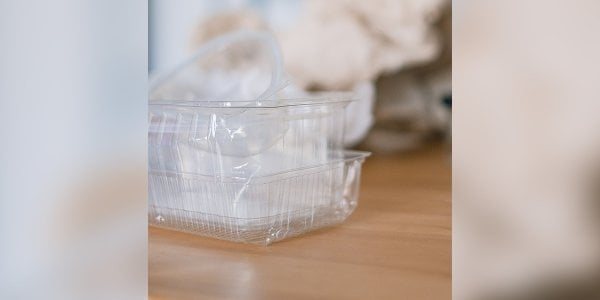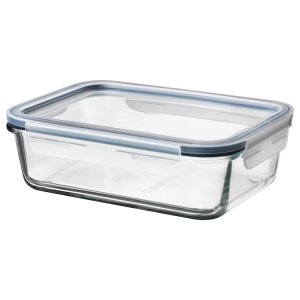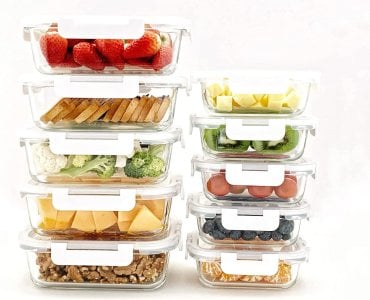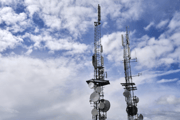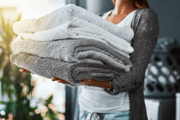Are your plastic containers ruined forever? Distressed cleaning enthusiast issues a serious warning about white residue
Many of us are fond of storing leftovers in reusable plastic containers.
It's an economical move and gives us the joy of relishing homemade meals—a choice that's often lighter on the pocket compared to dining out.
However, the delightful experience of a reheated meal can sometimes be spoiled by the stubborn white stains that adorn these containers.
You've probably seen it—those persistent milky streaks that refuse to budge, regardless of how hard you try.
One frustrated Reddit user voiced their concern on social media, posting: ‘My [containers] have this annoying residue left on them? Can't scrape them off with a fingernail, can't scrub them off with a sponge?’
Alongside this call for help were photos showing the residue with further insights: ‘It doesn't smell, but it looks dirty, any ideas on what it is or how to get it off?’
The online community was quick to respond. However, the solution offered might not have been what the user anticipated.
Tips to avoid white marks on reusable plastic containers
‘It’s heat damage, you can’t remove it,’ the top response clarified.
‘Don't microwave plastic, and ensure you let the food cool down somewhat before putting it away,’ they suggested.
Switching to an alternative was the advice of another member—suggesting the idea of buying ‘inexpensive glass food storage containers’ in lieu of reusable plastic containers.
‘They don't stain, warp or melt in the microwave,’ they highlighted.
‘We have [relegated] these types of containers as 'chip bowls' because they are a good size for that, and they shouldn't be microwaved,’ one user added.
They further advised: ‘Do yourself a favour and invest in glass containers you can microwave. Plastic lids for the glass containers are fine, just don't microwave the lids. We ingest too much plastic already – no need to add to it.’
Why glass food storage container is better
Food storage containers, especially those made of glass, are a significant upgrade from conventional plastic containers.
Not only are they more durable, but they also resist staining and won't retain odours.
Furthermore, glass containers don't leach harmful chemicals, making them a safer choice for long-term food storage.
Unlike many plastic alternatives, glass containers are typically microwave-safe, allowing for easy reheating without transferring your meal to another dish.

Members, what's your take on this cleaning tip? Do you also struggle with removing those white marks? How do you manage them? Let us know your thoughts in the comments below!
It's an economical move and gives us the joy of relishing homemade meals—a choice that's often lighter on the pocket compared to dining out.
However, the delightful experience of a reheated meal can sometimes be spoiled by the stubborn white stains that adorn these containers.
You've probably seen it—those persistent milky streaks that refuse to budge, regardless of how hard you try.
One frustrated Reddit user voiced their concern on social media, posting: ‘My [containers] have this annoying residue left on them? Can't scrape them off with a fingernail, can't scrub them off with a sponge?’
Alongside this call for help were photos showing the residue with further insights: ‘It doesn't smell, but it looks dirty, any ideas on what it is or how to get it off?’
The online community was quick to respond. However, the solution offered might not have been what the user anticipated.
Tips to avoid white marks on reusable plastic containers
‘It’s heat damage, you can’t remove it,’ the top response clarified.
‘Don't microwave plastic, and ensure you let the food cool down somewhat before putting it away,’ they suggested.
Switching to an alternative was the advice of another member—suggesting the idea of buying ‘inexpensive glass food storage containers’ in lieu of reusable plastic containers.
‘They don't stain, warp or melt in the microwave,’ they highlighted.
‘We have [relegated] these types of containers as 'chip bowls' because they are a good size for that, and they shouldn't be microwaved,’ one user added.
They further advised: ‘Do yourself a favour and invest in glass containers you can microwave. Plastic lids for the glass containers are fine, just don't microwave the lids. We ingest too much plastic already – no need to add to it.’
Why glass food storage container is better
Food storage containers, especially those made of glass, are a significant upgrade from conventional plastic containers.
Not only are they more durable, but they also resist staining and won't retain odours.
Furthermore, glass containers don't leach harmful chemicals, making them a safer choice for long-term food storage.
Unlike many plastic alternatives, glass containers are typically microwave-safe, allowing for easy reheating without transferring your meal to another dish.
Key Takeaways
- A cleaning enthusiast has warned about the white residue left on reusable plastic containers after heating meals.
- An online plea for help prompted a response that the residue is heat-damaged and cannot be removed.
- Advice included not microwaving plastic containers and ensuring food is cooled before storing.
- An alternative suggestion was to invest in inexpensive glass storage containers as they do not stain, warp or melt in the microwave.

